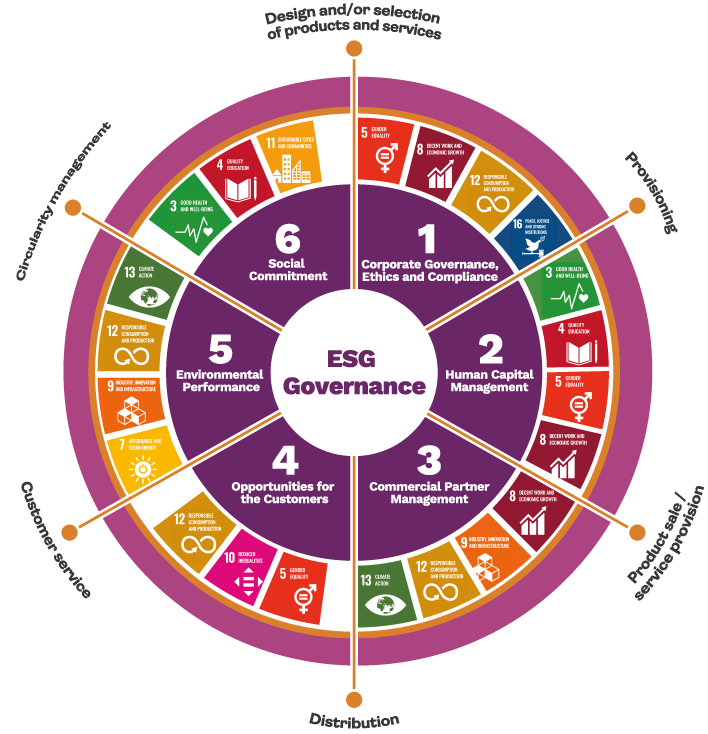The Footprint of El Puerto de Liverpool
Introduction
(GRI 2-14, 2-23, GOB-A, GOB-B, MYO-C)
Through our sustainability strategy, “The Footprint of El Puerto de Liverpool”, we set priorities based on the materiality study we conducted in 2020 to identify priority actions for our company. In this effort we are guided by the global targets established in the United Nations’ 2030 Agenda, which informs specific strategic activities linked to our business, with an awareness of their impact on our stakeholders.
Our ESG Model
The Footprint of El Puerto de Liverpool is based on a model that drives environmental, social and governance initiatives in support of our short, medium and long-term goals.


ESG culture and external assurance
(GRI 2-22)
We encourage instill ESG culture in our institution and throughout our value chain, to clearly and openly recognize and report the tangible impacts we have on others.
El Puerto de Liverpool conducts audits to prepare the key sustainability indicators aligned with Global Reporting Initiative (GRI) Standards. Our sustainability indicators are aligned with those of the Sustainability Accounting Standards Board (SASB), and our financial metrics are presented and compiled by the International Financial Reporting Standards (IFRS) issued by the International Accounting Standards Board (IASB) and the International Auditing Standards (IAS).
External assurance has been provided to offer a reasonable assurance that the consolidated financial and ESG statements as a whole are free from material misstatement, whether due to fraud or error, and is expressed in an audit report containing the opinion of the independent reviewer. Our Board of Directors is asked to evaluate the firm that is engaged to provide the external assurance, along with its work plan and professional service proposal, to ensure that it has the internal and external mechanisms necessary to provide reasonable certainty of compliance with applicable Laws and Regulations.
The Group’s management is responsible for drawing up the sustainability metrics that we have identified and for reporting them in accordance with the criteria. This responsibility includes the design, implementation, and maintenance of internal controls considered necessary to ensure that the identified sustainability metrics are free of error.
Our goals by dimension
(GRI 2-24)
Our priority actions are aligned with targets that have been set for the years 2030 and 2040; each year, we monitor and report our progress against these goals to international organizations who can provide feedback on the goals and help us report in a clearer and more transparent manner.

| Dimension | Goals | 2023 Progress (against base year 2021) |
Alignment with SDGs | |||
|---|---|---|---|---|---|---|
 Dimension Environmental Dimension Environmental |
Dimension |
By 2040:
|
2023 Progress (against base year 2021) |
|
Alignment with SDGs |



|
 Dimension Social Dimension Social |
Goals |
By 2030:
|
2023 Progress (against base year 2021) |
|
Alignment with SDGs |






|
 Dimension Governance Dimension Governance |
Goals |
By 2030:
*
Merchandise suppliers with a relationship of more than 1 year and annual purchase volume of more than $500,000 pesos.
|
2023 Progress (against base year 2021) |
|
Alineación a los ODS |


|
By pursuing these targets, we are contributing to integrity and transparency, which sets us apart in the universe of issuers that make up global indexes like the Dow Jones Sustainability Index and the S&P/BMV Total México ESG, and companies that report according to the criteria of the Task Force on Climate-Related Financial Disclosures (TCFD), IC500, SASB and GRI.